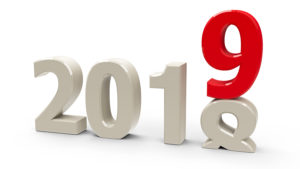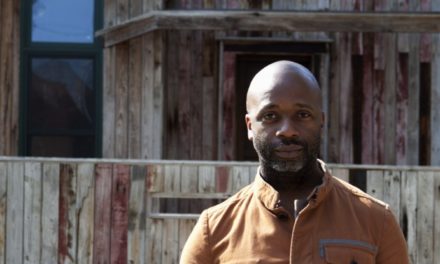We are posting resolutions, predictions, or observations by Memphians as they look ahead to the new year.
Aaron Shafer, St. Jude Children’s Research Hospital Scientist and Skate Park Advocate:
2018 was stellar year for the skate scene. In December of last year Society Memphis opened its doors to skateboarders, BMX riders and coffee aficionados . Memphis has not had an indoor skate park since the closing of Skatepark of Memphis in 2008. In the first two weeks of opening, Society has had over 500 unique users sign up to try out their ramps (and their delicious coffee!). Last Saturday 24 children and their parents showed up for skate lessons. The community has embraced the new venue and I am so proud of the owners for taking the risk to building such a treasure for our community.
Back in the spring of 2013, a presentation by the City was given to the Raleigh Springs community that revealed the plans to redevelop the Raleigh Springs mall area. Much to my pleasant surprise, a skate park was included in the presentation. Mentally, I wrote that project off, certain it would be shelved with the many other well-intentioned city plans. I was wrong. Fast forward to 2019. If you drive by the construction site where the old Raleigh Springs mall used to be, you will see a brand-new skate park that is 90 % finished. Sometime, this spring skateboarders will have their second public concrete skate park and the local Raleigh springs community will have a place where their kids can walk to and learn to skate.
2019 is going to be a great year for the skate community. I imagine in 2019, our family, especially my wife, will be making many visits to the recently opened Trader Joe’s. It’s really the little developments like TJs and our new indoor skate park that add up to improve the quality of life for people. I am excited to see what little developments continue surface for this new year!
Jen Andrews, CEO, Shelby Farms Park Conservancy:
Chipping Away at Resolutions
The only thing I love more than setting a goal is beating myself up, so New Year’s resolutions are tricky territory for me. I’ve avoided making them in part because I’m not content to wait until January 1 to put pressure on myself to improve. I have an ever-expanding list in my head of all the ways I’m falling short. I love to learn and I love to make progress. But I’m also wary about New Year’s resolutions because I worry that we put too much pressure on ourselves to change to meet impersonal external ideals when powerful transformations are often born of introspection, compassion, acceptance and authenticity.
It’s complicated.
But I do need to drink more water and less diet soda. I need to clean out my closet. My car trunk is a mess. I need to get through the stack of books on my desk. I should be more social. Start meditating. Stop grinding my teeth. Start doing yoga (again). Eat breakfast. I see opportunity for improvement everywhere. It’s a helpful trait for leadership, but when turned inward can be overwhelming.
I daydream about deep cleaning my home and purging my unnecessary belongings, Marie Kondo-style. In this fantasy, I say goodbye to all the items that no longer bring me joy. Goodbye three generations of old iPhones. Goodbye expired chicken stock in my pantry. Goodbye clothes I will never wear, and clothes I have worn to death. Goodbye mysterious thing in the back of my freezer. Is it possible to be both a minimalist and a hoarder? I am desperately drawn to the idea of purging. At the same time, I feel weighed down as it accumulates on my long list of needed self-improvements – a list I worry creates emotional clutter that’s hard to tidy up.
One late December day years ago, sometime in my mid-late 20s, I was sitting in a meeting with brilliant women leaders (a luxury my job often affords me). These were the kind of polished, stylish women who wear beautiful tailored suits without dog hair stuck to them. The kind of women who eat breakfast every day. As we talked through something I’m sure was very important, I glanced down at my hands and had a sudden and intense moment of self-consciousness as I beheld my fingernails. The remnants of a badly chipped, weeks-old polish job lingered. Already self-conscious about my relative inexperience and the volume of dog hair visible on my person, I could feel my cheeks getting red. I moved my hands under the table and felt like a total amateur for the rest of the meeting. It was the opposite of leaning in. I experienced a deep wave of shame on two fronts. 1) My nails looked gross and unprofessional, and I worried I might be judged for it, and 2) I felt ashamed at my vanity about something so superficial given my opportunity to engage in important non-grooming issues with amazing women.
I’m a little embarrassed sharing this story. I hate the world’s preoccupation with women’s looks, and I blame this insecurity on Big Nail Polish. Of course, none of the women in that meeting cared about my nails. I know that while they seemed perfect to me, at least one of them had something weird in her freezer that needed to be thrown out. We’re all complicated and a little messy sometimes. I hated that I’d allowed something so silly to keep me from participating fully in work that deserved my focus. After all, I was invited to that group to share my ideas, not to compare manicures. In that moment, I realized that my bad paint job was creating a distraction. Not for others, but for me.
On or off. That’s the New Year’s resolution I set in the wake of Nailgate. It’s really the only resolution I can remember ever making. When my polish chipped, I would prioritize touch-up paint. Or I would take off the polish altogether. And if I couldn’t keep my act together enough to avoid having chipped polish at work, I wouldn’t wear any at all. I had important work to do, and no room for distractions.
Guys, I’ve done a pretty good job! In the same span of time between this incident and today, I’ve closed out a $70 million capital campaign and become a CEO, but I’m really proud of this nail polish thing.
I started by trashing New Year’s resolutions for making us feel bad about ourselves, and then told you a story about how proud I am to have set and maintained a very superficial and unimportant resolution. While the pressure to improve can make us feel diminished or overwhelmed, self-improvement goals have the power to focus our attention on changes that make us feel better about ourselves. The definition of wisdom I like most is that it’s the ability to hold two conflicting ideas in your mind at once. But that’s also pretty close to the definition of cognitive dissonance, so do with that what you will.
I suppose this message is both an affirmation of the power of goal setting, and an appeal to be kind and accepting to ourselves and to others. Small improvements can help us feel more confident, and confidence can move mountains.




